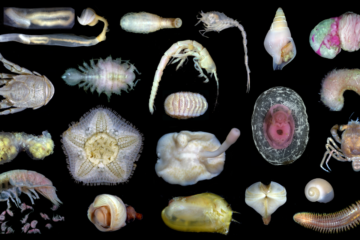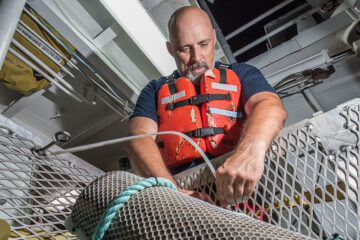 Very excited to see the third paper from the multi-year, wood-fall research project now in press. The paper focuses on a well-known macroecological pattern, the abundance-occupancy relationship. Simply, we find that species that are on average more abundant at any given location or more likely to be found at more sites. To restate, species that are rare in abundance are also not geographically widespread. In the paper, we explore how this relationship develops on deep-sea wood falls, using individual wood logs as different sites. We find that these relationships are influenced by the body size of the animals and age of the wood falls.
Very excited to see the third paper from the multi-year, wood-fall research project now in press. The paper focuses on a well-known macroecological pattern, the abundance-occupancy relationship. Simply, we find that species that are on average more abundant at any given location or more likely to be found at more sites. To restate, species that are rare in abundance are also not geographically widespread. In the paper, we explore how this relationship develops on deep-sea wood falls, using individual wood logs as different sites. We find that these relationships are influenced by the body size of the animals and age of the wood falls.
Also importantly, I am excited about this is the first paper to emerge from my collaborations with Thomas Webb. I have admired Thomas’s work for some while and it was a joy to work with him on this. This is just the first of many projects we have planned.
The generally positive relationship between the number of sites a species occupies and its average abundance within those sites provides an important link between population processes occurring at different spatial scales. Although such Abundance-Occupancy Relationships (AORs) have been documented across a very wide range of taxa and in many different environments, little is known of such patterns in Earth’s largest ecosystem, the deep sea. Wood falls—derived from natural or anthropogenic inputs of wood into the oceans—constitute an important deep-sea habitat, habouring their own unique communities ultimately entirely dependent on the wood for chemical energy. In this study we take advantage of the unique features of an experimental wood fall deployment to examine AORs for the first time in deep-sea invertebrates. The study design combines advantages of both experimental (tractability, control of key environmental parameters) and observational (natural colonisation by taxonomically diverse communities) studies. We show that the interspecific AOR is strongly positive across the 48 species occurring over 32 wood fall communities. The precise form of the AOR is mediated by both species-level life history (body size) and by the colonisation stage at which communities were harvested, but not by environmental energy (wood fall size). Temporal dynamics within species are also generally consistent with positive intraspecific AORs. This support for positive AORs in the deep sea is an important extension of a macroecological generality into a new environment offering considerable potential for further testing and developing mechanistic macroecological theories.


